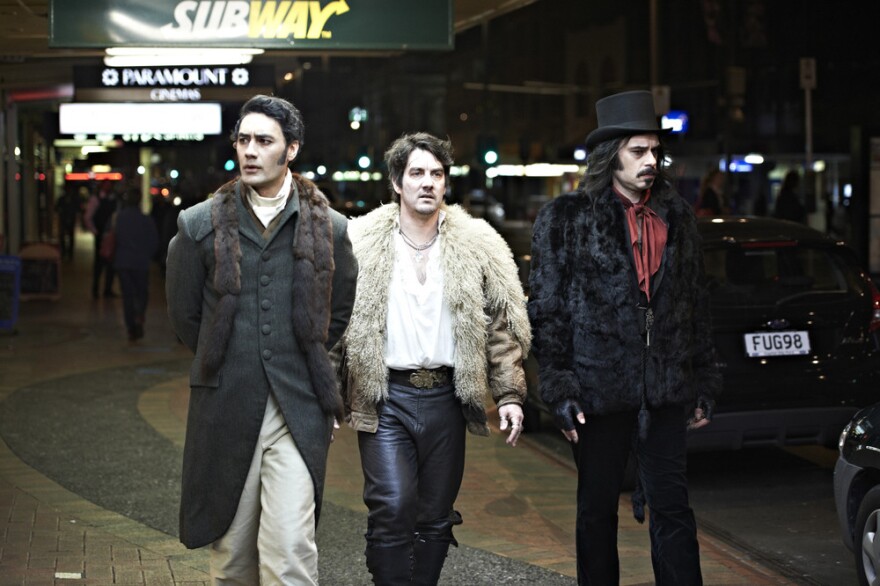Recent versions of vampires – at least in the movies – have seemed too much like pouty teenagers who need to get outside for some fresh air and exercise. In contrast who doesn't prefer old-fashioned Dracula types with creepy old castles and coffins to sleep in, who don't moon about and whine so much? The new film What We Do in the Shadows strikes a middle ground.
Hailing from New Zealand, which apparently has a decent vampire population, the four vampires at the center of the film do have coffins, although instead of the castle, they have an apartment, and that's the first problem they confront in the movie.
Vladislav, Viago, Deacon and Petyr are set to have a meeting because the place is a mess. As Viago says, not everyone is pulling his weight. Deacon has not done the dishes for five years. And besides that ancient pile in the kitchen, there's blood all over the place.
Vladislav, played by co-director Jemaine Clement, shouts that he's "embarrassed to have people over to their home." Deacon responds, "When you have them over, you kill them," to which Vladislav only nods.
What We Do in the Shadows is something like a few ordinary days in the lives of New Zealand vampires. Except for Petyr, the boys look to be roughly college age, maybe in their early 30s, although Viago, played by the other co-director Taika Waititi, says he's 379-years-old, and he asks his flatmates to be forgiving with Petyr because he is, after all, 8000-years-old.
The occasion for the film, according to written titles at the start, is that the Unholy Ball is coming up in a few months, and these four vampires have granted access to a film crew, each of whom wore a crucifix and was granted protection during the filming. Again according to the titles, the film comes from The New Zealand Documentary Board, although somehow I don't think it's actually a documentary.
http://youtu.be/68ivZAWJ5ZM
It's a sweet and amiable send-up of vampire lore, though, so long as you enjoy the neck chomping and blood spurting.
Sweet-tempered and solicitous of his friends, Viago is the host of the film. He guides us around the apartment explaining things. A natty dresser in a high-collared smoking jacket and ascot, Viago speaks in a charming accent, which may be intended as Transylvanian. At the beginning of the picture, Viago wakes each one of his friends like a tender mom getting her kids up for school, although it is, of course, nighttime and the four guys will soon go out looking for blood. Viago is a good reality-show type of guide. He whispers when he confides in us; he tries to make the best of difficult moments; he's a bit self-deprecating and he's touchingly disorganized. He's also charmingly delighted by treasured objects in his life.
What We Do in the Shadows is short, which is a good thing, because there isn't enough material, or even potential material, to carry the film for a long time. But it's inventive enough. Just when you start to hope the ending will hove into view, the picture comes up with a good riff. The four vampire pals encounter a group of growling werewolves, who also look like pretty average guys wandering around the city at night. They even mention the Twilight series, but, frankly, I'd rather watch this. It's funnier and the comedy is intentional.
What We Do in the Shadows is a smart piece of work. Directors Clement and Waititi have a good sense of the limits of what they're doing. The film stays within itself; it doesn't get grandiose or self-important. It doesn't try to fool anyone into thinking that it might really be a documentary; it's gory enough, but not too gory. It's a trifle, but a good one.





